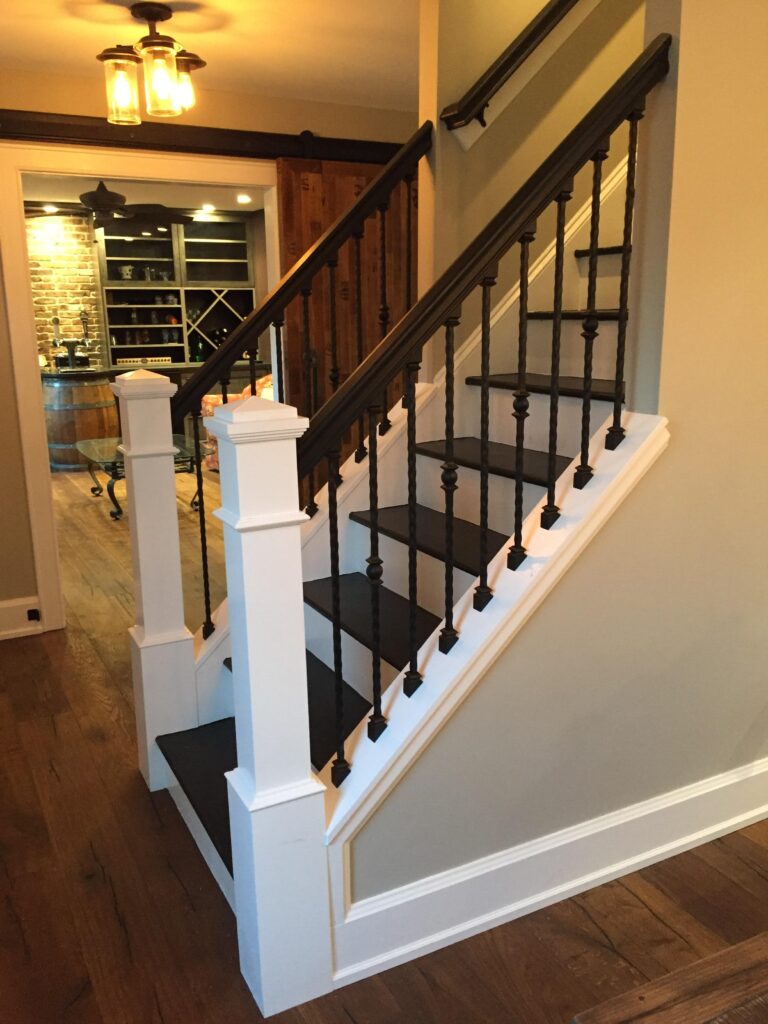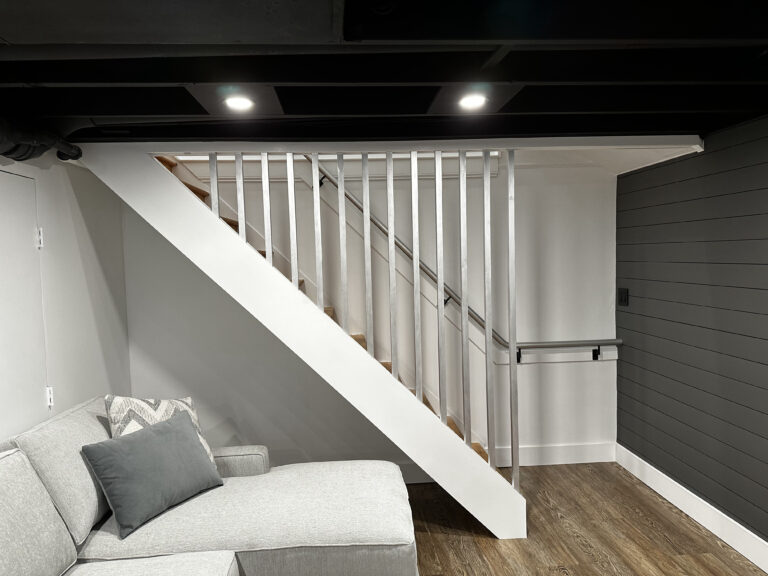
Stairs are more than just a means to move between floors. They are a central feature in a home and influence its overall aesthetic and functionality. When designing or remodeling your home, the type of stairs and materials you choose impacts both the look and flow of your space. Let’s explore some of the most popular types of stairs and design considerations.
Types of Stairs


Straight Stairs
Straight stairs are the most common and straightforward design. The simplicity makes them easy to design and build because they do not require any special support. For this reason, they are often the most cost-effective option. Straight stairs can consume more linear space and may not fit all floor plans.


L-Shaped Stairs
Also known as quarter-turn stairs, L-shaped stairs add a 90-degree turn, typically at a landing. This design is more visually appealing and easier to navigate than straight stairs. They fit well into corners and the bend offers some privacy between barriers. The complexity of their structure requires additional planning and support, which can increase the overall cost.


U-Shaped Stairs
U-shaped stairs go by many names, including half turn and switchback. They are two parallel flights of straight stairs separated by a landing that creates a 180-degree turn for an eye-catching design. Because they are more narrow, they take up less linear floor space. U-shaped stairs are often easy to fit into architectural plans, but they may be difficult to construct in smaller homes.
Design Considerations
Stair Materials
There are different types of materials to use for your staircase and you’ll want to select one that suits your space. Wood is a classic choice and often the go-to-material because it offers warmth and versatility with options ranging from rich oak to sleek walnut making it suitable for both traditional and contemporary designs. It can also be painted.


For a modern, industrial feel, consider metal, such as steel or wrought iron, or concrete. Glass stairs give an open feel and make spaces look larger.
Handrails and Railings
Handrails and railings provide essential support while enhancing your home’s aesthetic by creating a unifying line connecting the upstairs and downstairs areas. By choosing the design and material, you can create a natural flow that is both welcoming and stylish.


Wood railings offer a traditional, cozy feel while wrought iron railings are maintenance-free and durable. For a more open and contemporary look, glass railings create a sense of spaciousness and are often paired with steel handrails. Decorative balusters are also available in different materials and can add intricate details and enhance the overall visual appeal of your staircase.
Choosing the right type of stairs for your home is a decision that blends practicality with aesthetics. By understanding the different types of stairs and materials available, you can make the best choice for your preferences.
